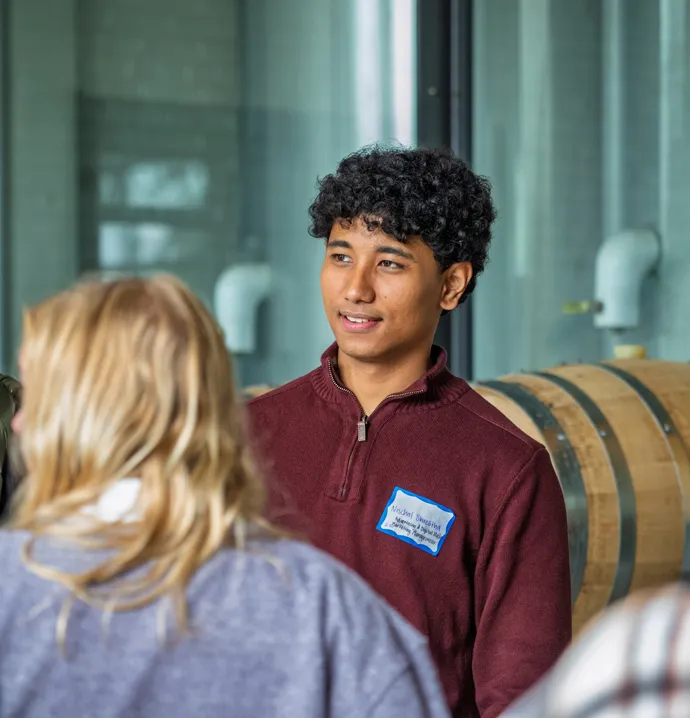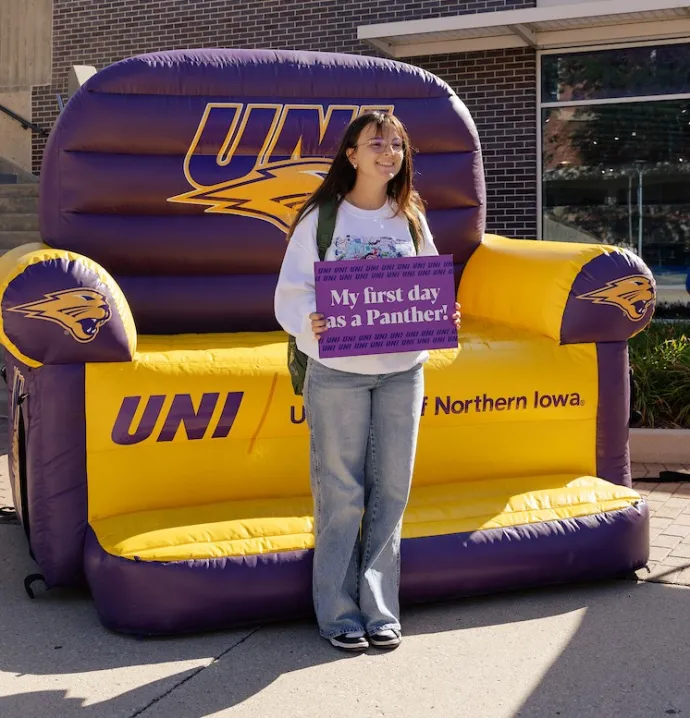UNIBusiness security analysis class uses Krause Fund to learn real-world trading tools
UNIBusiness security analysis class uses Krause Fund to learn real-world trading tools
It’s hard to replicate the feeling of investing in a real portfolio made up of real money. At UNIBusiness, the Krause Fund provides an opportunity for students to do exactly that.
It started more than two decades ago, when Bill Krause, the founder of Kum and Go, donated $100,000 to four universities, including UNI, hoping to see them compete on performance. Over the years, interest waned. But in fall 2018, UNI sold the index fund with the purpose of starting a portfolio invested in by students.
Justin Lallemand, assistant professor of finance, teaches the security analysis course, which is heavily focused on pitching stock investments for the Krause Fund. First, students learn investment management tools, sharpen them through two short presentations before making a final stock pitch/recommendation at the end of the semester. At the end of the class, six stocks recommended by students are added to the portfolio.
“I think the fund is tremendously important to those students considering investments, even if it isn't necessarily on the equities side,” Lallemand said. “First of all, it's very motivating and fun to be a part of the process, and personally it's my favorite class, especially when I see that motivation. What students seem to really pick up on is how messy the process can be using a real-world example.”
For example, students sometimes run into accounting that isn’t as clear as a classroom scenario, which can affect a valuation model and alter predictions. This helps them understand the qualitative side of trading, rather than just looking at numbers.
The recent market volatility due to COVID-19 has given students an interesting perspective on buying and selling. Since the class doesn’t invest until after the semester is over, students might be looking at tremendous buying opportunities depending on how long the country remains closed.
Whatever the case, Lallemand said students seem to be passionate and learn real-world tools. There are even some students who check stocks long after they’ve finished the course.
“Students seem to take the task at hand much more seriously than when working on a case study, for example, as there is real money involved,” he said. “I've had students check the stock they selected and express their excitement when it outperforms — maybe with underperforming stocks I get little feedback as expected!”




